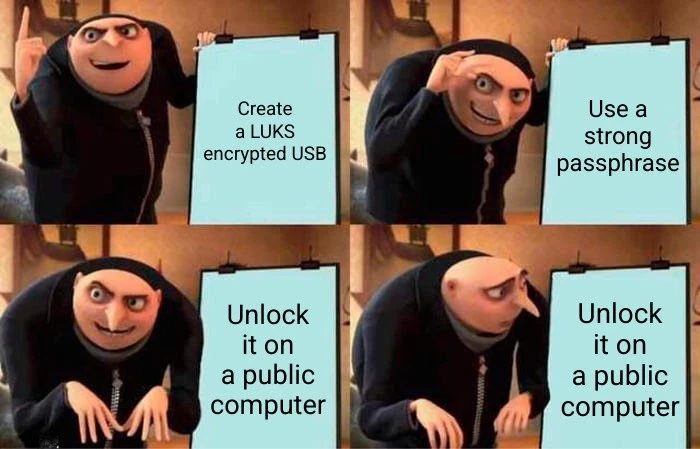Operations Security (OPSEC)
Welcome to the first operations security (OPSEC) community on Lemmy!
This is a space dedicated to discussing, sharing, and learning about operational security practices. Whether you are a business owner, a cybersecurity expert, or just a regular person, you can always benefit from a little extra OPSEC in your life.
Community Guidelines
As we belong to Lemmy.zip all of their guidelines apply on top of ours.
-
Stay on topic:
- Keep discussions related to OPSEC only
- If your post is about this community instead of OPSEC prepend [META] to the title
-
No illegal content:
- Do not discuss, promote, or engage in illegal activities
- While OPSEC can be used for criminal activity, we will not offer assistance to anyone planning to use it for such
-
Quality Content:
- Provide only good, factual and credible advice
- Avoid spreading misinformation or unverified claims
- Avoid low-effort posts, spam and sensationalism
- Copypastas are allowed only as comments and if related to the post or parent comment.
- Do not post AI-generated content; anyone can ask ChatGPT for assistance so do what you do best: be a human
- Anyone giving blatantly false advice will be permanently banned
-
No Self-Promotion:
- Refrain from excessive self-promotion or advertising
- Occasional sharing of personal projects is allowed if it benefits the community
-
Threat Models:
- Do not ask for advice without mentioning your threat model
- Do not provide advice ridiculously outside the asker's threat model
- Do not provide advice without knowing the asker's threat model (except when providing general advice to the community)
What is OPSEC?
Operations security (OPSEC) is a process that identifies critical information to determine whether friendly actions can be observed by enemy intelligence, determines if information obtained by adversaries could be interpreted to be useful to them, and then executes selected measures that eliminate or reduce adversary exploitation of friendly critical information.
In simpler terms, it is the process of finding vulnerabilities that an adversary could exploit and patching them, thereby reducing your attack surface.
OPSEC is NOT a synonym for cybersecurity. It can encompass it; however, it also revolves around physical security.




